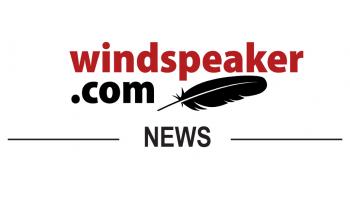Summary
Local Journalism Initiative Reporter
Windspeaer.com
Jurisdictional issues are causing concerns when it comes to the distribution of coronavirus vaccines to Indigenous people.
“There … (are) challenges to overcome when we try to work in partnership with multiple levels of governments and the prioritization province-by-province,” said Marion Crowe, CEO for the First Nations Health Managers Association (FNHMA).
During the weekly virtual townhall Jan. 21 hosted by FNHMA, Crowe referenced comments by premiers who have questioned the need to provide their provinces’ allocated vaccines to Indigenous peoples because First Nations are a federal responsibility. Crowe said one premier even went so far as to say that First Nations were not a priority. She did not report which premiers she was referring to in her comments.
The federal government’s role is to procure the vaccines. It’s up to the provinces to distribute them. However, said Dr. Tom Wong, executive director and Chief Medical Officer of Public Health with Indigenous Services Canada (ISC), that distribution should follow the guidelines set out by the National Advisory Committee on Immunization (NACI).
Wong, who sits on NACI, told the virtual forum audience that NACI did a “thorough evidence review” and developed prioritization recommendations, including Elders and residents and staff in long-term care and Elder care facilities; frontline healthcare workers; and Indigenous peoples in communities in settings where they are disproportionately impacted by COVID-19.
“Those are the groups right at the very, very beginning. The National Advisory Committee on Immunization is telling the whole country please follow these evidence-based guidelines and that includes marginalized, racialized groups in urban settings, including First Nations, Métis and Inuit in those settings,” Wong said.
Issues have arisen in dealing with the urban Indigenous population and Wong highlighted outbreaks in Montreal, Vancouver and Winnipeg.
“In particular, the (intensive care unit) admissions for off-reserve in urban areas in Manitoba has been found to be even worse than that on reserve. So this really highlights the point that, yes, there are great needs in the north, but equally that there’s huge needs in some of the urban centres where there’s a lack of services, overcrowding, in homeless shelters,” he said
Kim Daly, senior nurse manager, Communicable Disease Control Department with ISC, is also with the COVID-19 vaccine working group for urban Indigenous populations. She told the virtual audience that working with provinces goes beyond prioritizing Indigenous groups. It’s also about making the vaccine accessible.
“When we’re talking about items such as systemic racism, it’s important that provinces recognize that just opening a clinic down the road does not mean equal access for all the populations. We’re really trying to break down those barriers so that they know that it’s not just on reserve. It’s not just on remote and isolated (communities). There are barriers all across this country and we’re working together with them,” she said.
Epidemiology, said Daly, also dictates how the vaccine is used province-to-province and that was clear throughout the country.
Some provinces, like Newfoundland/Labrador, Quebec, Ontario and British Columbia prioritized remote, isolated or fly-in communities, while other provinces, like Prince Edward Island and New Brunswick, prioritized those 18 years and over in Indigenous communities. Manitoba, Alberta and the Northwest Territories prioritized Elder care homes. In Saskatchewan, northern communities were included in the first phase.
Daly applauded provinces, like Quebec, which initially saw only about a 50 per cent uptake from Indigenous residents in remote communities for the vaccine.
“The province was really gracious with communications, stating, ‘When you’re ready, the vaccine will be here.’ And there was a provision they kept back vaccines… So we really like that approach so people don’t have to make an on-the-spot decision, that they feel comfortable to come back through,” said Daly.
Vaccine hesitancy, she added, should be answered with “kindness and understanding and facts.”
Daly also pointed out that there were some First Nations and organization like Nishnawbe Aski Nation, which led the process, setting the example for how the vaccine should continue to be rolled out.
Wong said more than 160 Indigenous communities have started immunization clinics.
“As vaccine deployment continues it remains critical that First Nations, Métis and Inuit leaders and partners are included at decision-making tables in each province and each territory and continue to engage in co-planning to determine ongoing capacity and needs with respective communities,” he said.

